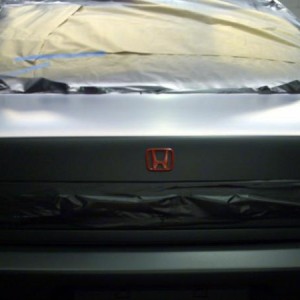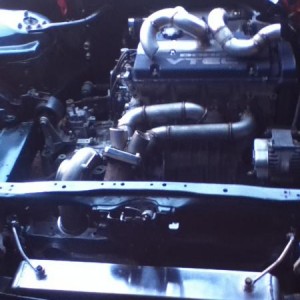
There are 2 main types of compression tests:
1. Leakdown (how much pressure a cyl holds over time)
2. Static Compression (Peak pressure generated)
This DIY covers static compression
static Compression testing is step #1 on the diagnosis board when you have misfires or engine trouble.
If you plan on turbo, n20 or any other mod You should COMP test first,
And usually comp test every 15K or so you know how your motor is doing.
I always comp test before I buy a vehicle
Okay first off this DIY is based on only a few pictures from my GSR test, But the process is the exact same for accords. If you have a v6 note that you have 6 spark plugs to read instead of 4 and their may be clearance issues I have not addressed as I dont own a v6 but Im pretty sure it will work just fine
Tools you will need
1. Common sense (not optional)
2. Compression tester
3. Spark plug socket
4. Extension
5. Ratchet
6. Pen and paper
7. A buddy to help crank the car (Optional)
8. new plugs (optional)
9. torque wrench (optional)
First I will explain what compression is.
When your engine is on the power stroke with all valves closed, Static Compression is the peak pressure generated by the piston as it compresses the air fuel mixture.
This can be used to determine the health of the engine in many ways.
rings, Valves, Headgasket. If any one of those 3 are not running up to par you will see a lower reading on that particular cyl.
Okay On to the meat.
1.Start by running your car to operating temp (optional) then turn off the car
2.Gain access to the Fuse box and remove the ECU fuse.
you do this so that the car does not start during the compression test, and also it prevents fuel from being injected into the cyl.


3.Once you have the Fuse removed Pull all 4 spart plug wires from the plugs, Clean the plug holes with a vaccum or compressor (optional but good to keep things from falling into the cyl)
Some Honda DOHC motors have a plug cover Remove this.





I plugged the spark plug tubes with paper towels while cleaning to prevent any debris from falling down into the cyl.


4. Remove all 4 spark plugs. mark down what each plug looks like, white/brown black/ oily. In the end you should have 4 columns with info laid out like this
CYL 1 2 3 4
Spark Plug Appearance brown brown light brown brown
Compression 150 153 150 157
Tips on reading your plugs? click here http://www.ngksparkplugs.com/techinfo/spark_plugs/faq/faqread2.asp
5. lube & connect your compression tester tool, Be sure to lube the o-ring to aid in removal of the tool as its a pain to get out





6. Screw in the tool till its somewhat snug, once the compression tool is in place and ecu fuse are pulled you are ready to start, It is important while testing the compression to keep the throttle body plate WOT, So every time you test the compression be sure your foot is on the Gas ALL THE WAY TO THE FLOOR. This allows air to flow into the cyl and measure correctly.
So get a friend and have them first press the gas pedal to the floor then crank the engine, Each revoloution you will see the compression gauge spike and settle, Allow a 5 seconds of cranking untill your readings stop increasing and are steady and peaked. Quickly write down the number on your paper next to the corresponding cyl.

Press the pressure relief valve on the tester remove tester and then
Repeat for the next 3 cyl.
Completion:
Reinstall spark plugs with anti seize to specified torque,




I usually replace them with new ones since the work is already done and spark plugs are cheap. But if you have expensive plugs or are cheap/broke just plug them back in.
Reinstall plug wires and the ECU fuse.
Job complete, You now have a static compression reading on your motor along with basic plug readings.
A little info on your readings.
Compression is a relative reading, One person may get 200 on all cyl and another 170 on all cyl
The important thing is that your compression numbers stay consistent across the board.
For instance A reading of 150 155 147 145 Is much better than
200 175 150 200
If you have 1 cyl reading really low your engine is not in proper running condition, even if it runs it may have issues in the future.
One theory I am told is that a constant low compression on 1 cyl creates an uneven load on the main bearings. (this is a theory)
There are many more. But the bottom line is a Drastic difference in numbers is NOT GOOD, So plan accordingly
For some this may be peace of mind, For others it may be a wake up call.
You want all your numbers to group together. If you have 1 cyl that is reading off You may have a couple issues
Things that can cause readings to drop will include
1. Head gasket leaks between the bores of cyl (this usually causes low number son cyl that touch each other IE 1,2 or 2,3 or 3,4)
2. Valves are not sealing,(this could be caused by piston / valve contact, valve seat damage, Or inccorect valve lash
3. Ring damage, In the even rings are damaged that cyl may not compress as high as cyl that are in health shape.
4. Head warpage, Causing either a combo of HG problems or valve seating issues.
Things that can cause HIGH numbers are usually
1. Oil in a cyl
2. Fuel or ringwash in the cyl bore
Please Rep, Im new here









